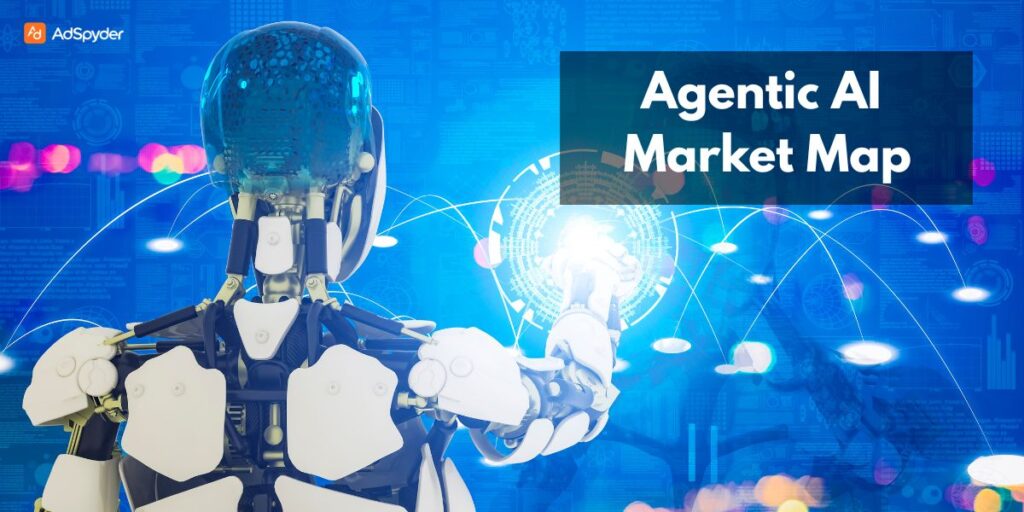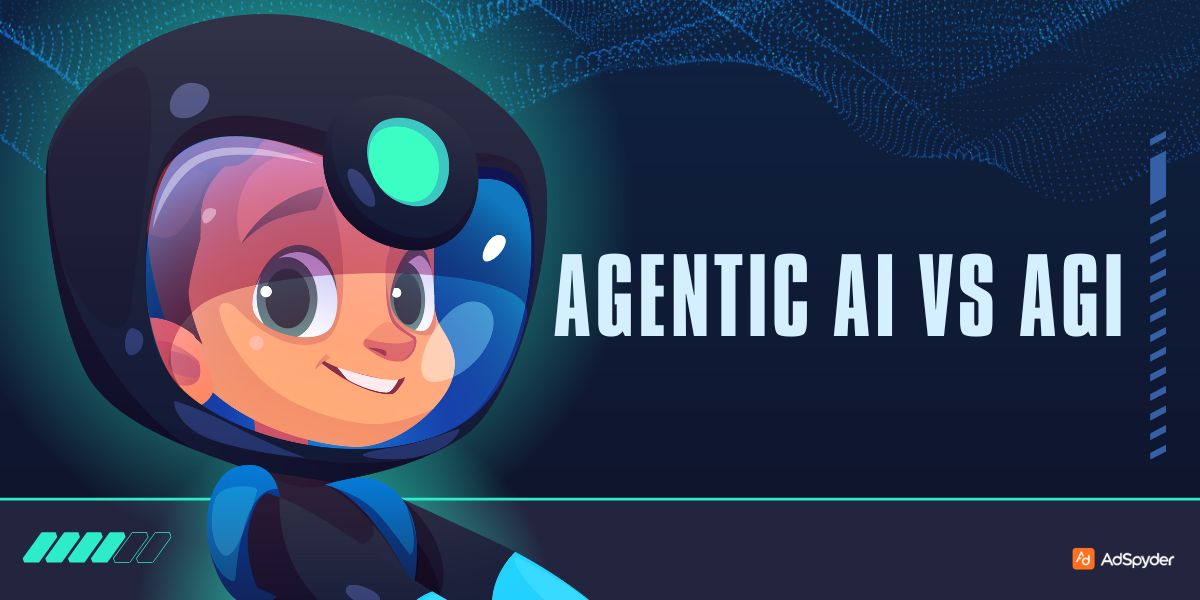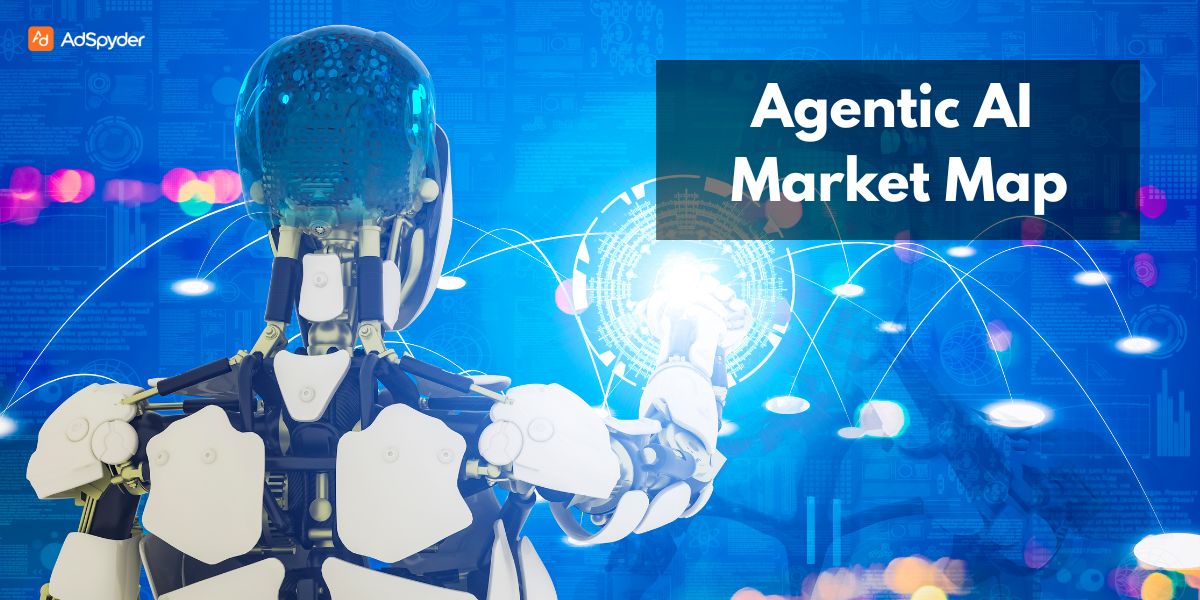As the AI landscape matures beyond language models and into full-fledged autonomous systems, Agentic AI has emerged as a distinct and fast-growing category. Unlike generative tools that stop at output, agentic systems perceive, plan, act, and reflect—handling full tasks across domains like IT, marketing, customer service, and development. But with so many new frameworks and startups entering the space, it can be difficult to understand who’s doing what, and how the ecosystem is evolving. In this blog, we’ll break down the current Agentic AI Market Map, key tools, platforms, and emerging standards defining this new frontier.
Ready to Elevate your Marketing Strategy?
What Is Agentic AI?
At its core, Agentic AI marries LLMs (Large Language Models) with:
- Multi-step planning
- Tool use (APIs, scripts, services)
- Memory (short- and long-term)
- Execution engines (task orchestration)
- Feedback loops for reflection or retries
This creates AI agents that can:
- Autonomously troubleshoot support issues
- Deploy software or test code
- Run marketing campaigns
- Interpret goals and act across enterprise systems
Must See – Agentic AI vs Traditional AI
Key Categories in the Agentic AI Ecosystem
Let’s look at how the ecosystem breaks down:
1. Agent Frameworks
These provide the scaffolding to build, manage, and coordinate autonomous agents.
| Framework | Notable Features |
| LangChain | Modular tool calling, memory, chains |
| LangGraph | Agentic graph-based orchestration |
| CrewAI | Role-based multi-agent collaboration |
| AutoGen (Microsoft) | Research-grade multi-agent framework |
| OpenAgents | Open-source platform for autonomous agents |
2. Execution & Orchestration Tools
These tools enable agents to carry out plans using real tools and workflows.
| Tool | Purpose |
| LangServe | Serve LangChain-powered agents via APIs |
| ReAct + Toolformer | Planning + API integration patterns |
| FastAPI, Flask | Lightweight deployment of agent endpoints |
| LangSmith | Agent tracing, debugging, and observability |
3. Memory & Context Management
Agentic systems rely on context and memory to avoid repetition and make decisions.
| Memory Tools | Type |
| Weaviate | Vector search for long-term memory |
| Pinecone | Vector store with fast similarity search |
| Redis + JSON | Lightweight key-value memory |
| Milvus | High-performance embedding DB |
Related – Agentic AI vs RAG
4. LLMs & Reasoning Cores
The LLM remains the reasoning engine inside agentic systems.
| LLM Providers | Popular Models |
| OpenAI | GPT-4, GPT-4o |
| Anthropic | Claude 3 series |
| Google DeepMind | Gemini |
| Meta | LLaMA series (open-source) |
| Mistral, Cohere | Lightweight open models |
5. Developer Tooling & SDKs
To bridge developer workflows into agent systems.
| Tool/Platform | Use Case |
| Ollama | Local model deployment and execution |
| Python SDKs | Glue logic for orchestration and tools |
| VectorHub | Unified vector search infrastructure |
| Replicate | Agent execution pipelines for ML models |
6. Vertical Solutions
Enterprise tools embedding Agentic AI in business functions.
| Company | Focus Area |
| Aisera | Autonomous service desk and support |
| Cognosys | Developer agents and agent app stores |
| Adept | Action-oriented browser-based automation |
| HyperWrite | Task agents for writing and planning |
| Dust | Agent orchestration for knowledge teams |
Standards and Interoperability
As the market grows, so does the need for open standards and shared protocols. Watch for:
- Open Agent Protocols (OAP)
- Inter-agent communication standards
- Eval benchmarks for agent performance
- Security and authorization layers for autonomous tool use
These are early but will be critical as agent ecosystems mature across vendors and clouds.
Explore Now – Agentic AI vs LLMs
What to Expect Next
We will see, in Agentic AI, platform consolidation, where:
- Modular frameworks will standardize interfaces
- Enterprise tools will embed agentic logic by default
- Cloud providers (AWS, Azure, GCP) will build deeper agent-native services
- Security, logging, and governance will become core features, not afterthoughts
Final Thoughts for Agentic AI Market Map
Agentic AI is no longer just a research concept—it’s becoming a competitive advantage.
From frameworks like LangChain to vertical players like Aisera and open models from Meta, the ecosystem is vibrant and rapidly expanding. Whether you’re a developer building agents or an enterprise exploring automation, understanding the market map helps you pick the right tools, plan your architecture, and future-proof your stack.
Agentic AI is here to stay—and knowing the landscape is the first step to building intelligently within it.
Recommended For You – Agentic AI vs Generative AI
FAQs for Agentic AI Market Map
What is the Agentic AI market?
The Agentic AI market consists of tools, platforms, frameworks, and companies building systems that go beyond language generation to include planning, tool use, memory, and autonomous execution.
What are the most popular frameworks for building agentic systems?
LangChain, LangGraph, CrewAI, OpenAgents, and AutoGen are leading frameworks that provide structure for building and orchestrating agents.
Is Agentic AI dependent on any specific LLM?
No. While most use models like GPT-4, Claude, or open-source options like Mistral, agentic systems are LLM-agnostic and can integrate with various model providers.
What is LangGraph used for?
LangGraph enables multi-agent orchestration using a graph-based workflow system, allowing agents to communicate and coordinate in complex task environments.
Which companies are building vertical-specific Agentic AI tools?
Aisera (support), Cognosys (developer workflows), Adept (UI automation), and HyperWrite (writing agents) are examples of domain-focused agentic platforms.
What role do vector databases play in Agentic AI?
They provide long-term memory and semantic search capabilities that agents use to recall context, documents, past interactions, and knowledge efficiently.
What standards are emerging in this space?
Emerging standards include agent-to-agent protocols, memory API conventions, logging and tracing schemas, and safety/compliance guidelines for autonomous execution.
Can I self-host Agentic AI tools?
Yes. Many frameworks like LangChain, CrewAI, or Ollama allow for full-on-prem or private cloud deployment, especially with open models.
What’s the difference between execution frameworks and orchestration tools?
Execution frameworks handle running actions (e.g., via APIs or scripts), while orchestration tools manage how agents decide when and how to act across multiple steps.
Where is the Agentic AI market heading next?
Expect to see consolidation around common platforms, deeper enterprise integrations, more robust observability and logging tools, and increasing focus on governance and safety.




